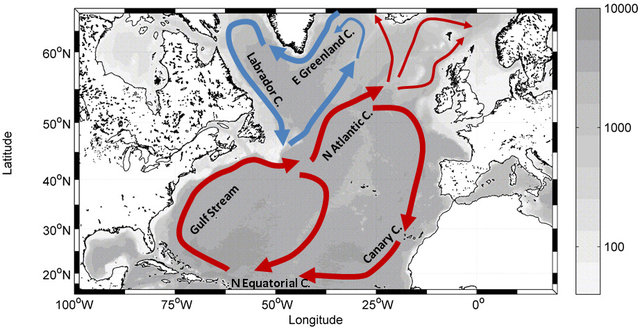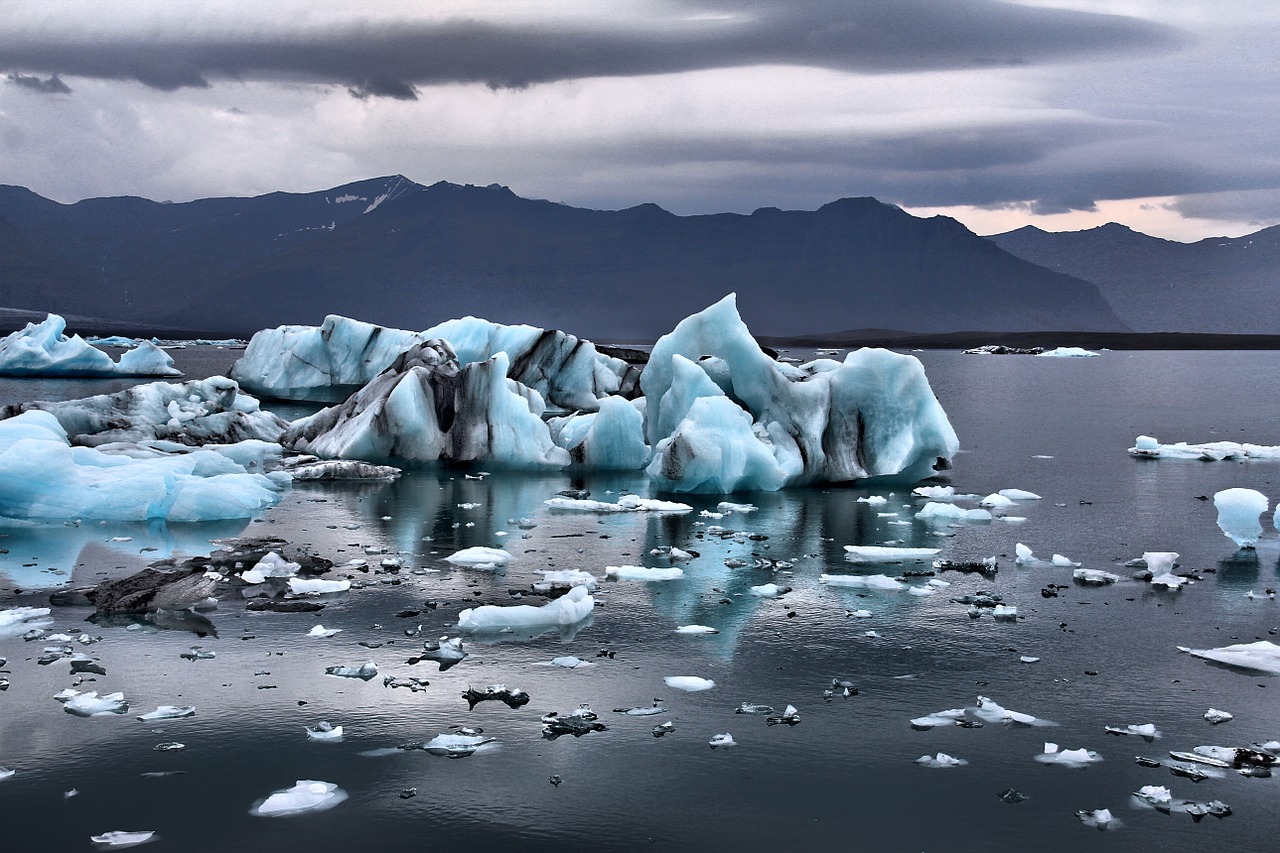Featured image of sea ice from Free-Photos on Pixabay
Paper: Rapid Cooling and Increased Storminess Triggered by Freshwater in the North Atlantic
Authors: M. Oltmanns, J. Karstensen, G. W. K. Moore, and S. A. Josey
Way up north in the Arctic Circle, sea ice and glaciers are rapidly melting and sending a massive amount of cold, fresh water into the North Atlantic Ocean. At first this influx of cold water may seem beneficial to offset the warming from climate change, but new research suggests that this meltwater from Greenland and the Arctic increases the number of winter storms that occur in the Northern Hemisphere.
To understand the connection between meltwater and winter storms, it’s important to know that freshwater is less dense than salty water, so freshwater will sit on top of salty water. This is what happens in the North Atlantic, where the meltwater from sea ice and glaciers creates a freshwater layer on top of the salty ocean water. Because of the molecular properties of freshwater versus salty water, freshwater cools faster than salty water. In the fall and winter when the ocean starts naturally cooling, the pool of freshwater cools faster than the salty ocean water to its south and east. This contrast results in an abnormally cold region in the North Atlantic Ocean.
This extremely cold region (often around 60°N) creates a greater temperature difference between the North Atlantic and the warm tropical Atlantic than in a normal year. This is where winter storms get their energy from: temperature differences! The more frequent winter storms, driven by this enhanced temperature difference, then reinforce the cooling even further: the strong winds from the storms strengthen the subpolar ocean circulation in the North Atlantic, which traps the cold freshwater in the interior of the circulation and allows the region to cool off even more.

This chain of events does not occur every year; it takes a very large amount of freshwater to begin the process, and because the ocean flows very slowly, it may take years for the freshwater pool to develop. The authors discuss two large historical freshwater events that scientists have measured: one back in 1969-1972 and a more recent prolonged event that has peaked in 2008-2012 and 2015/2016. They note that both of these freshening events were followed by periods of enhanced winter storminess in the Northern Hemisphere.
These findings by Oltmanns et al. highlight one way in which polar ice, the ocean, and large-scale atmospheric patterns will be linked under future climate change. Warmer air and ocean temperatures due to climate change will hasten the melting of land and sea ice in Greenland and the Arctic, thus increasing the chances of more large freshwater events and therefore more winter storms for the Northern Hemisphere. Winter storms can be very destructive, especially in northern Europe where recent years of increased storminess have resulted in extreme wind and rainfall events. Atmospheric scientists are working hard to understand how climate change will affect the frequency and intensity of winter storms, and this study has added another piece to the puzzle.
North Atlantic Ice Melt May Increase the Storminess of the Northern Hemisphere by Alyssa Stansfield is licensed under a Creative Commons Attribution-ShareAlike 4.0 International License.

